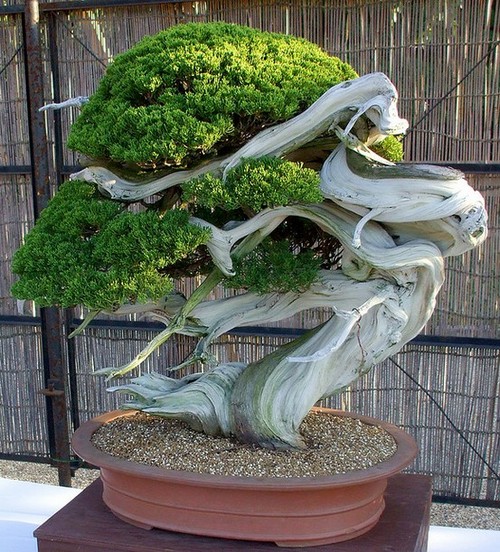Your Bonsai Will Thank You For Avoiding These Common Mistakes!
Posted by Jason on 11th May 2015

A bonsai tree is a truly unique addition to a home, part decoration and part house-guest. Bonsai trees are no mere houseplant! These are genuine trees, bred from mother nature, with the potential to live as long as you.
But they need proper care and handling. It's easy to think of trees as "taking care of themselves," but bonsai have special needs that must be met. They're easy to care for, but there are still a few important rules to follow to ensure they're able to fully express their inner beauty for many years.
Keep these guidelines in mind, and you'll have a lifelong companion.
Grow A Happy Healthy Bonsai By Remembering A Few Simple Rules
1 - Under-watering quickly kills a bonsai.
Nothing can more easily kill a bonsai than lack of water. While exact amounts will vary depending on the soil type you're using, as a rule of thumb a bonsai should usually be watered once or twice a day. The soil should never dry out entirely, because then the roots start to dry out.
Lack of water can ruin a bonsai within just a few days, in fact. If you're going away on a trip, don't forget to arrange for a plant-sitter to water your bonsai for you.
2 - Avoid over-watering as well.
The good news here is that it's far harder to harm a bonsai with over-watering. The roots would need to be consistently wet, or kept in standing water, for a matter of weeks. However, it can happen, especially among anxious first-time growers.
3 - Keep your bonsai well-lit.
Since bonsai trees originally grew outdoors, they want and need plenty of sunlight. It's nearly impossible to over-expose a bonsai to sunlight in a typical house. We recommend keeping it in direct sunlight, preferably in a southern-facing window since those capture more sunlight over the course of a day.
4 - There are "indoor" and "outdoor" bonsai trees too.
When buying a bonsai, be sure to ask whether the breed is an inside or outside tree. Juniper, for example, is commonly purchased by bonsai beginners but simply cannot be kept indoors. If it is, its needles will quickly start to yellow and fall off.
Likewise, an indoor tree breed may not be able to handle the weather in your area. So, be sure you know beforehand whether your bonsai wants indoor or outdoor environments, or it could be a costly mistake.
5 - Only reshape a bonsai once a year.
To a large extent, you can do maintenance pruning on your bonsai pretty much whenever you feel like it. Allowing it to grow, bloom, and fade is part of the charm of having a bonsai. In fact, there are techniques like jinning which involve leaving deadwood on the bonsai for artistic effect.
However, you should only make major changes to it once a year. Bonsai are sensitive, and they need time to recover from a major "operation" just like people. Don't redesign or re-pot your bonsai any more often, or you risk doing permanent harm.
A bonsai tree can truly be a life-long companion, or even a keepsake that potentially can remain in your family for generations. If you have any other questions about proper bonsai care, please don't hesitate to contact the experts here at BonsaiOutlet.com!
